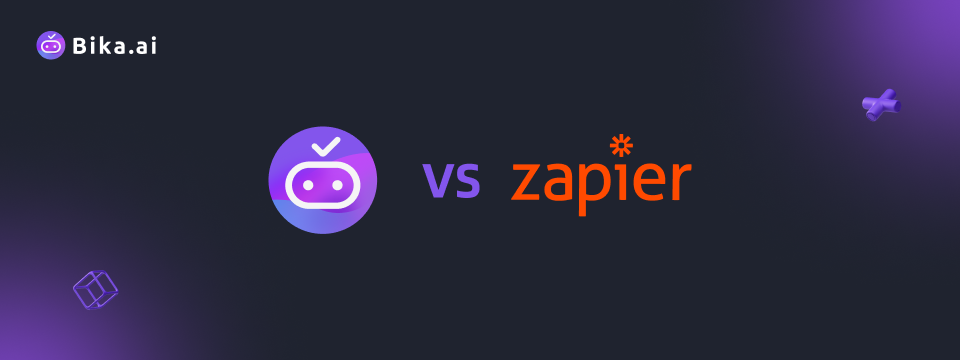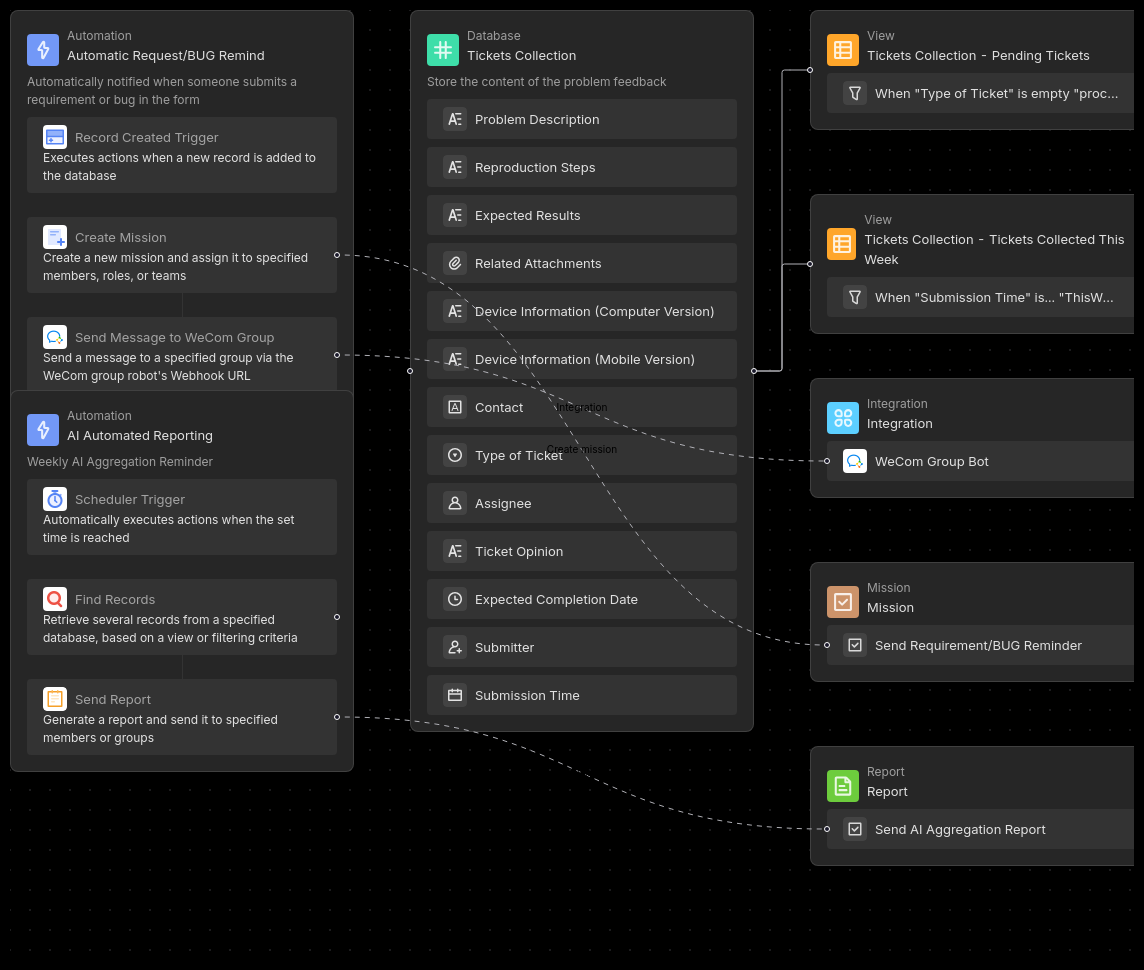
In today's fast-paced business world, effectively tracking ticket status is crucial. But what exactly drives the need for such a system? Well, consider the complexity of modern projects, where multiple tasks, requirements, and potential bugs are constantly in flux. Managing this chaos manually can be overwhelming and prone to errors.
That's where tools like Zapier come into play. It's been a popular choice for automating tasks and connecting various apps. However, it's not without its flaws. The separation of automation and the database can cause confusion and inefficiencies.
Enter Bika.ai. Its AI Project Issues and Tickets template is emerging as a strong contender, offering a seamless solution to these very challenges. Free Trial

When comparing Zapier and Bika.ai on key features related to tracking ticket status, the differences are quite telling.
| Feature | Zapier | Bika.ai |
|---|---|---|
| Pricing | Automation starts at $19.99/month + Database starts at $20/month | Starts at $9.99/month per seat |
| Automation per Month | Starts at 750 tasks/month | Starts at 30,000 runs/month |
| Database Integration | Database separates from automation, additional cost | Integrated visual database with automation |
| Maximum Records | 500,000 records for the highest plan | 1,500,000 records for the highest plan |
| Tables Offered | Up to 50 tables in the highest plan | Unlimited tables |
| Templates | Templates without pre-filled content | Plug-and-play templates with pre-filled content and detailed guides |
| Customization | Limited by app connections and plan limits | Extensive customization with API-first design |
| Integration | Over 6,000 apps | Over 6,000 apps through integrations with Zapier, Make, Pabbly, and others |
| Data Handling | Limited field types and views | 38 field types and 13 node resources |
| Proactive Automation | None | Proactive AI that manages and schedules tasks |
It's clear that Bika.ai holds several significant advantages over Zapier.
Bika.ai has dedicated considerable research and gathered practical feedback specifically for the tracking ticket status scenario. This focus has allowed it to tailor its solution precisely to the needs of the relevant audience and market.
By doing so, it has managed to enhance efficiency and save valuable time for users.

The automation of tracking ticket status brings a plethora of benefits to team collaboration. It leads to increased efficiency, saves precious time, reduces errors, offers customization options, provides convenience, and cuts costs.
People in various roles such as project managers, developers, QA engineers, product owners, customer support, and business analysts can all reap the rewards.
The use cases for which this template can be applied are extensive, including but not limited to effectively tracking ticket status.

The process of using Bika.ai's template is straightforward. Use AI automation to manage your project issues, tickets, requirements, and bugs.
Automatically collect, summarize, and prompt actions to manage project progress more effectively and provide timely feedback to users on development progress.
Switching from Zapier to Bika.ai is a simple process.
First, assess your existing workflows in Zapier and identify how they can be replicated or enhanced in Bika.ai.
Then, register for Bika.ai and explore its extensive template library to match or improve your current automations.
Finally, export your data from Zapier Tables in a CSV or Excel format and import it to Bika.ai to start benefiting from its robust automation features immediately.
So, if you're looking for a more efficient, integrated, and user-friendly solution for tracking ticket status, Bika.ai's AI Project Issues and Tickets template is undoubtedly the way to go.



Coming soon

Coming soon

Coming soon

Coming soon

Coming soon